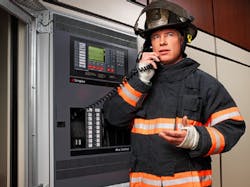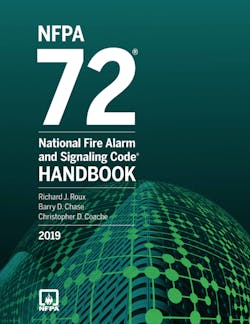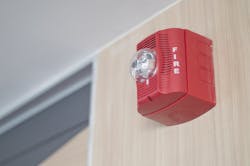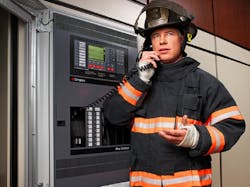NFPA 72: Mitigating Nuisance Alarms
By RODGER REISWIG, President, Automatic Fire Alarm Association (AFAA)
Unwanted and nuisance alarms have become an increasing problem in the fire and life safety industry. In fact, The National Fire Protection Association (NFPA) found that U.S. fire departments responded to 47% – or 2.4 million – unwanted alarms in 2016. The staggering number of unwanted alarms has impelled a growing response from key stakeholders across the fire and life-safety industry to better address the issue. Advancements in fire alarm and smoke detection technologies, along with new standards and regulations, are driving the charge to help improve accuracy and enhance protection to reduce unwanted alarms at industrial and commercial facilities.
Nuisance Alarms: Getting Ahead of the Problem
Understanding what is really happening when an alarm goes off gives occupants, managers and responders the ability to respond appropriately and efficiently, while making sure that more serious alarms get first priority. Unfortunately, the majority of nuisance alarms are not the result of a fire, but rather are caused by forms of smoke or steam from burnt food, cooking, fireplaces or even hot showers. In addition, system malfunction, improper maintenance and lack of cleaning can be culprits.
The frequency of unwanted alarms is more than a nuisance or danger for facilities as the inability to prioritize real events over unwanted alarms can result in fines and penalties. In U.S. cities like Memphis and Minneapolis, these implications have caused a call to action to prioritize the implementation, maintenance and testing of fire alarms and detection technologies. Not only will this proactive approach help to eventually reduce the number of unwanted alarms, but it will also help facilities get ahead of the new changes to the UL smoke detector listings that will become mandatory May of 2020.
NFPA 72 and Technological Advancements
Serving as an industrywide benchmark, the 2019 edition of NFPA 72 – National Fire Alarm and Signaling Code – presents the most advanced safety provisions to meet society’s changing fire detection, signaling, and emergency communications demands. It is a vital resource that outlines standards and regulations for the application, installation, performance, and maintenance of fire alarm and emergency communications systems. Manufacturers, integrators and facility managers alike are ramping up efforts for when these new provisions will go into effect.
Most of the new provisions outlined in NFPA 72 reflect advancements in smoke and fire detection technologies. For example, new smoke detection technologies have been developed to differentiate between smoke particles versus that of cooking aerosols, steam and other materials to reduce the source of nuisance alarms. While these technologies are available, they have not been widely implemented by facilities. Another critical innovation governed by NFPA 72 is ‘signaling,’ referring to mass notification and communication systems that are integrated with fire alarms. Specifically, new standards outline which systems get precedent in an emergency pending the incident at hand. NFPA 72 states that the priority of mass notification messages over fire alarm evacuation, “Shall be permitted when evaluated by the stakeholders.” This enables facility managers to override the fire alarm control panel in the event of a non-fire emergency to communicate accurate directions to occupants. This further helps mitigate the side effects of nuisance alarms.
As these codes and standards make their way to market, facility owners must be reminded that they are responsible for keeping their systems in working condition and tested per NFPA 72.
A Proactive Approach is the Best Approach
In addition to implementing new fire and smoke detection technologies in response to the new guidelines outlined in NFPA 72, it is important to keep regular maintenance and testing top of mind. Much like when buying a new car, without proper care, performance can decrease dramatically. The same goes for fire and smoke detection systems. It’s crucial for facility owners to be proactive when it comes to systems upkeep in order for the technologies to effectively do their job.
Reducing the frequency of unwanted and nuisance alarms can seem like a major undertaking, but many hands make light work. When facility owners work in tandem with the variety of sources available – from the NFPA to fire and life-safety integrators – they can better help address the problem. For instance, there are many benefits to identifying a licensed integrator as they can help provide guidance on the integration and implementation of fire and life-safety strategies and technologies, and ensure systems are compliant and functioning properly. Taking this step can be of help to facility owners as they prepare to make the necessary changes in the coming months to be equipped to meet the new standards of NFPA 72. Instead of referring to these technology updates as expensive or cumbersome, facilities should think of the return-on-investment in the long-term. Having these advanced resources will be well worth it.




